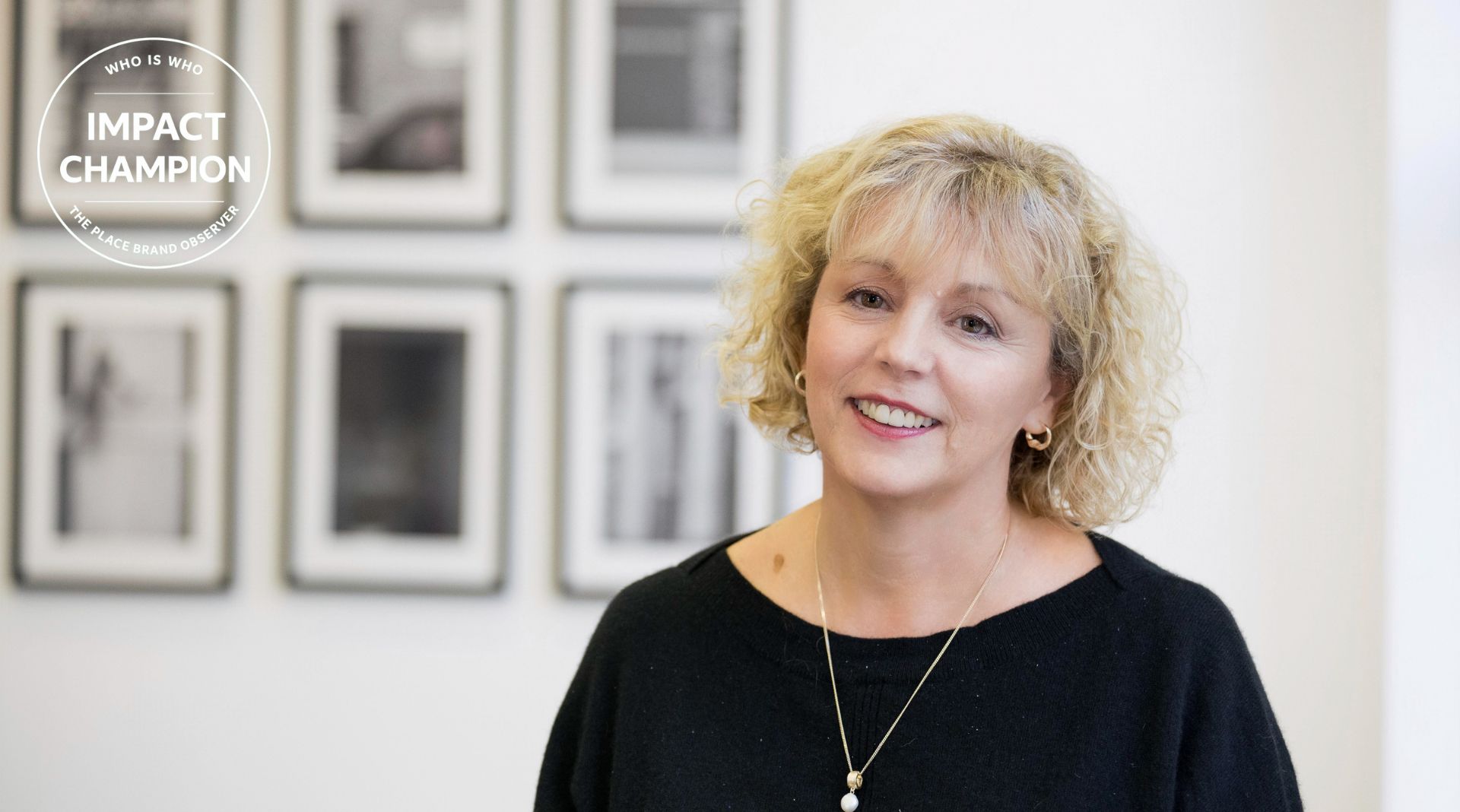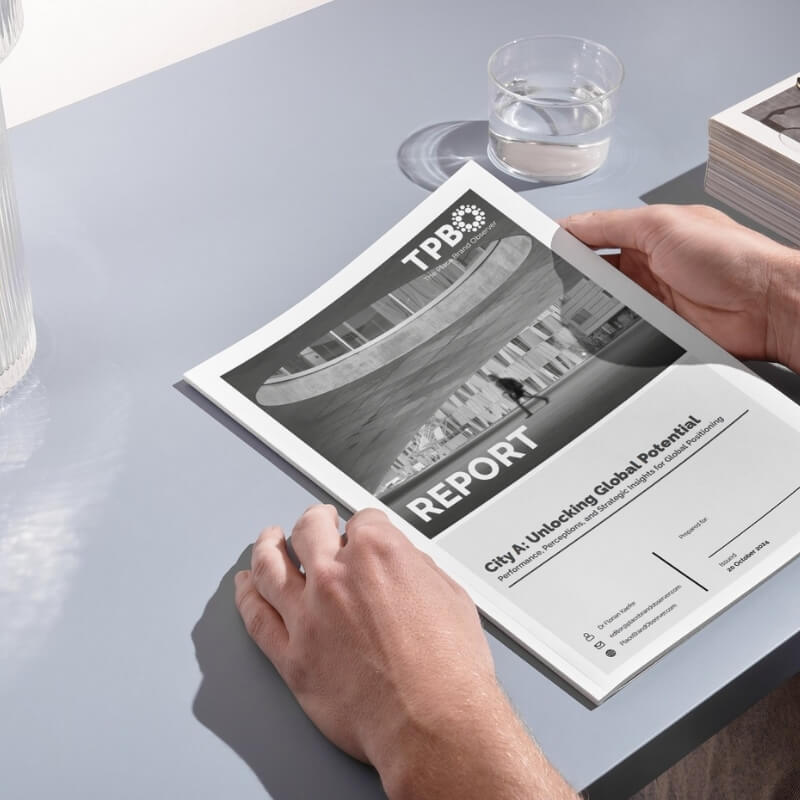This year, both The Place Brand Observer (TPBO) and City Nation Place (CNP) celebrate ten years of existence—a decade that has seen tremendous changes in the field of place branding. We congratulate Clare Dewhirst, founder and director of CNP (and a member of our Who’s Who of Place Branding Impact Makers) for her remarkable work in putting best practices in place branding into the spotlight.
Through her conferences, Clare, together with her partner Martin and the CNP team, has successfully brought together professionals from different disciplines and geographies—a purpose that unites both CNP and TPBO.
We invited Clare to share some key insights from having been on the pulse of the place branding community for a decade, and to hear more about the key themes of the City Nation Place Global conference in London this November.
Clare, in a decade of running City Nation Place, what’s the biggest shift you’ve seen in place branding around the world?
I think the easiest answer to that question is the growth of understanding in the power and potential of place branding strategies.
When we began in 2015, there were a few countries and fewer cities recognised for having undertaken a process of understanding the overall place brand or reputation and for putting in place a strategy to manage and build more positive perceptions. Now there is a larger number of countries, regions, cities, towns, and even neighbourhoods engaging in this place brand strategy process. And this shift means that now there are more destination marketing or investment promotion organisations thinking of “place brand strategy” in this way and working to build the collaboration necessary to achieve it – rather than a nation brand or city brand team working in what I might call a “purist” way.
With this growth in interest there’s also been progress on measurement and KPIs. I remember back in 2015 a panel discussion which talked of the need for industry standards on KPIs. Whilst we’re not there yet, we do now have the major piece of research carried out by Bloom Consulting with City Nation Place support, which defines the economic impact of the perception of place. And we are currently working with our Advisory Group on a project that will provide a place-led checklist of KPIs for place brand identity.
Finally, we’ve seen a growth in understanding that if you can define your place values and build them into your place brand narrative, then first of all you will create a stronger, more impactful identity. Secondly, you can start to use your place brand as a guide to action. This will be a strong theme of the first day of this year’s City Nation Place Global conference on November 6-7th.
Can you share examples of cities, regions, or nations who have successfully addressed their challenges with a strategic place brand?
I think one great “before” and “after” story of a place that has benefited from having a strong place brand narrative is Eindhoven. Peter Kentie, the former managing director of Eindhoven 365, was a speaker back in 2015 and stayed in touch with City Nation Place until his recent retirement. He can tell a story of how the place brand encapsulated a vision for the city that successfully contributed to economic recovery, civic pride and growth.
At this year’s Global conference, we’re delighted to be hearing from Peter’s successor at Eindhoven 365, Roland Kleve, who will share how the brand is supporting the next stage of the city’s growth – how it’s bringing the citizens and stakeholders on the journey and encouraging buy-in to a more sustainable future.
What do you consider to be the most essential ingredient of an impactful place brand strategy?
I think it’s very rare, if not impossible, for a place brand that is created “top down” to succeed.
It’s essential to have citizen or community buy-in – your people are your place. You need to put in the not insubstantial work required to ensure you’re telling their story, and they see themselves in the place brand narrative presented to the outside world. You need buy-in from the full breadth of stakeholders of course, but I do think that citizen engagement is the primary ingredient.
We’ll be hearing from Costa Rica, the Faroe Islands, and the City of Lublin how they have engaged their citizens in their work, in November.
But there’s lots of places taking really creative, outside-the-box approaches to engaging their community – we’ve collected some of our favourites in our Citizen Engagement Toolkit which is freely available for the place brand community.
Given your global perspective, what do you think is the most common challenge facing place brand teams?
I suspect that all of the place brand teams we speak with, whatever the size of their place or their organisation, would mention budgetary challenge and the need to prove and/or advocate for the value of their work in order to ensure security of funding.
This is why the work on benchmarking KPIs is so important. We have a leadership panel at the Global conference sharing how they use data and other tools to demonstrate what their organisation and what their place brand is delivering.
Getting this advocacy right and getting the governance structure of your place brand right so that you have the right support, is essential.
We’ll be running an optional Think Tank before the main Global conference agenda to explore governance and structure for place branding, which will dive deeper into our report from earlier this year.
Looking forwards, what do you think is the biggest opportunity for place brand and marketing teams?
Every opportunity comes attached to a challenge, doesn’t it! As with every industry sector in the world, we can see place brand and marketing teams evaluating and testing the potential for AI tools to support their work.
We’ll have three different perspectives on this at the Global conference – from Dublin’s work developing AI-driven personalised tourism experiences, to The Netherlands inspired development of an AI tool to engage the world in their vision for more pedestrian and cycle-friendly urban design solutions, and Toronto’s perspective on how AI is changing the game for investment attraction marketing.
Even as we look at the opportunity, we need to also look at how this will change the skills and role of our teams, whether we want our visitors, citizens, or investors to engage with an AI tool rather than with our people, and – long-term – at how we ensure that the growth in AI is sustainable and does not have a negative impact on the place’s stated objectives to meet SDG goals, given the increase in energy and water consumption reported.
But I think the biggest opportunity for place brand teams is successful collaboration between stakeholders that delivers a place brand vision and strategy which everyone has bought into. Then you can start to make a real difference to the success of your place economy and the quality of life for your citizens.
Thank you, Clare.
City Nation Place Global brings together international place brand and marketing leaders to connect the dots between tourism, economic development, civic pride, and talent attraction in order to create vibrant, thriving places. Find out how you can join the conversations here.


